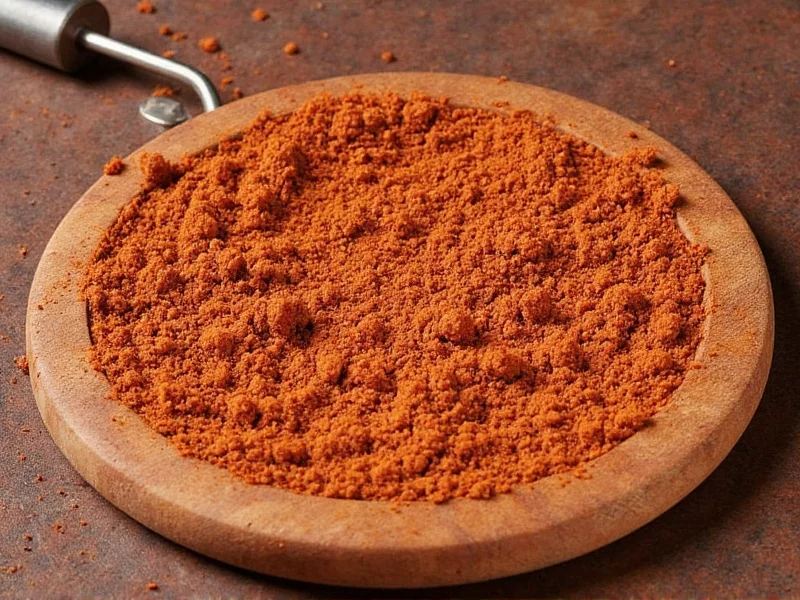Creating exceptional barbecue chicken starts with a well-crafted dry rub that enhances flavor without overpowering the meat. Unlike marinades that work primarily on the surface, a quality dry rub forms a flavorful crust while allowing the chicken's natural juices to shine through during cooking. The magic happens when the right combination of spices creates a Maillard reaction on the chicken's surface, producing complex flavors and an irresistible texture.
Why Rub Composition Matters for Chicken
Chicken requires a different approach than beef or pork when it comes to rubs. Its more delicate flavor profile means seasoning blends must strike a careful balance—robust enough to add dimension but not so aggressive that they mask the poultry's natural taste. The ideal barbecue chicken rub should have four essential components working in harmony:
| Component | Purpose | Key Ingredients |
|---|---|---|
| Sweet Element | Counteracts heat, promotes caramelization | Brown sugar, honey powder, maple sugar |
| Smoky Base | Creates barbecue essence | Smoked paprika, chipotle powder |
| Savory Foundation | Enhances meat's natural umami | Garlic powder, onion powder, mustard powder |
| Heat & Complexity | Adds dimension and warmth | Cayenne, black pepper, cumin |
Building the Perfect Barbecue Chicken Rub
The following recipe represents the culmination of extensive testing across various cooking methods and chicken cuts. This versatile blend works equally well for grilling, smoking, or oven-roasting:
Classic Barbecue Chicken Rub Recipe
Makes enough for 4-6 chicken portions
- 3 tablespoons smoked paprika (not regular paprika)
- 2 tablespoons packed light brown sugar
- 1 tablespoon garlic powder (not granulated)
- 1 tablespoon onion powder
- 1 tablespoon kosher salt (Diamond Crystal)
- 1 teaspoon freshly ground black pepper
- 1/2 teaspoon cayenne pepper (adjust to taste)
- 1 teaspoon dried mustard powder
- 1/2 teaspoon ground cumin
Why These Proportions Work
This specific ratio delivers optimal flavor penetration without overwhelming the chicken. The 3:2 ratio of smoked paprika to brown sugar creates the perfect sweet-smoke balance that defines great barbecue chicken. Using kosher salt rather than table salt prevents oversalting, as its larger crystals distribute more evenly. Freshly ground black pepper provides brighter flavor notes than pre-ground versions.
Application Techniques That Make a Difference
Even the best barbecue chicken rub recipe will underperform without proper application. Follow these professional techniques to maximize flavor development:
Timing Is Everything
Apply your dry rub at least 1 hour before cooking, but ideally 4-12 hours in advance. This allows time for the salt to penetrate the meat through osmosis, seasoning it from within rather than just coating the surface. For best results:
- Thin cuts (breasts, wings): 1-4 hours refrigerated
- Thicker cuts (thighs, drumettes): 4-12 hours refrigerated
- Whole chicken: 12-24 hours refrigerated
Proper Rub Application Method
Don't just sprinkle and hope. For even coverage that sticks:
- Dry the chicken surface thoroughly with paper towels
- Apply a thin layer of neutral oil (like canola) to help the rub adhere
- Measure the rub into a small bowl
- Using your fingertips, gently press the rub into the chicken, covering all surfaces
- For bone-in pieces, work some rub underneath the skin
- Place on a wire rack over a tray to prevent pooling
Avoiding Common Rub Mistakes
Many home cooks sabotage their barbecue chicken by making these preventable errors:
- Sugar burn: Brown sugar begins caramelizing at 320°F (160°C). Keep grill temperatures below this when cooking rubbed chicken to prevent bitter, burnt flavors.
- Over-rubbing: Applying too much rub creates an overwhelming spice crust. Use approximately 1 tablespoon of rub per pound of chicken.
- Skipping the rest period: Applying rub immediately before cooking yields superficial flavor. The salt needs time to work its magic.
- Using old spices: Ground spices lose potency within 6 months. Test paprika by mixing a pinch with oil—if the oil doesn't turn deep red, it's time for fresh spices.
Variations for Different Cooking Styles
Tailor your barbecue chicken rub to your cooking method for optimal results:
For Direct Grilling (High Heat)
Reduce sugar content by 25% to prevent burning. Increase salt by 20% to compensate for faster cooking time. Add 1/2 teaspoon celery seed for depth.
For Smoking (Low and Slow)
Increase sugar content by 25% to develop richer bark. Add 1 teaspoon coffee powder for complexity. Include 1/2 teaspoon dried thyme for herbal notes that complement long cooking.
For Oven Roasting
Maintain standard recipe proportions. Add 1 teaspoon onion salt to compensate for lack of smoke flavor. Include 1/4 teaspoon baking powder to promote extra browning in dry oven environment.
Storage and Shelf Life
Homemade barbecue rubs maintain peak flavor for 3-6 months when stored properly. Use these guidelines:
- Store in airtight glass container away from light and heat
- Never store in metal containers (reacts with acids)
- Add 1-2 rice grains to absorb moisture and prevent clumping
- Label with creation date—discard after 6 months
Test freshness by rubbing a small amount between damp fingers. If the aroma is weak or musty, it's time to make a fresh batch. Properly stored rubs should maintain vibrant color and strong fragrance.
Why Homemade Beats Store-Bought
Commercial barbecue rubs often contain anti-caking agents, preservatives, and excessive sugar that compromise flavor. When you make your own:
- You control ingredient quality and freshness
- You can adjust heat and sweetness to personal preference
- You avoid unnecessary additives and fillers
- You achieve better flavor penetration with proper salt ratios
- You save money—homemade rub costs approximately $0.15 per ounce versus $0.50+ for premium brands











 浙公网安备
33010002000092号
浙公网安备
33010002000092号 浙B2-20120091-4
浙B2-20120091-4